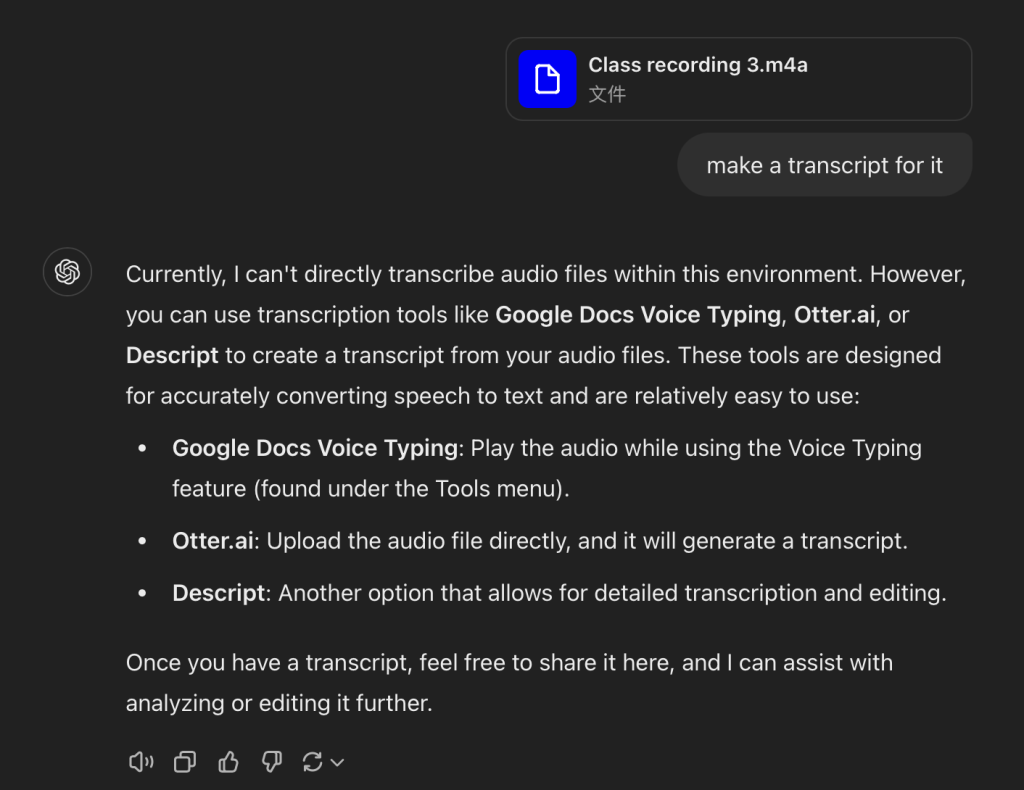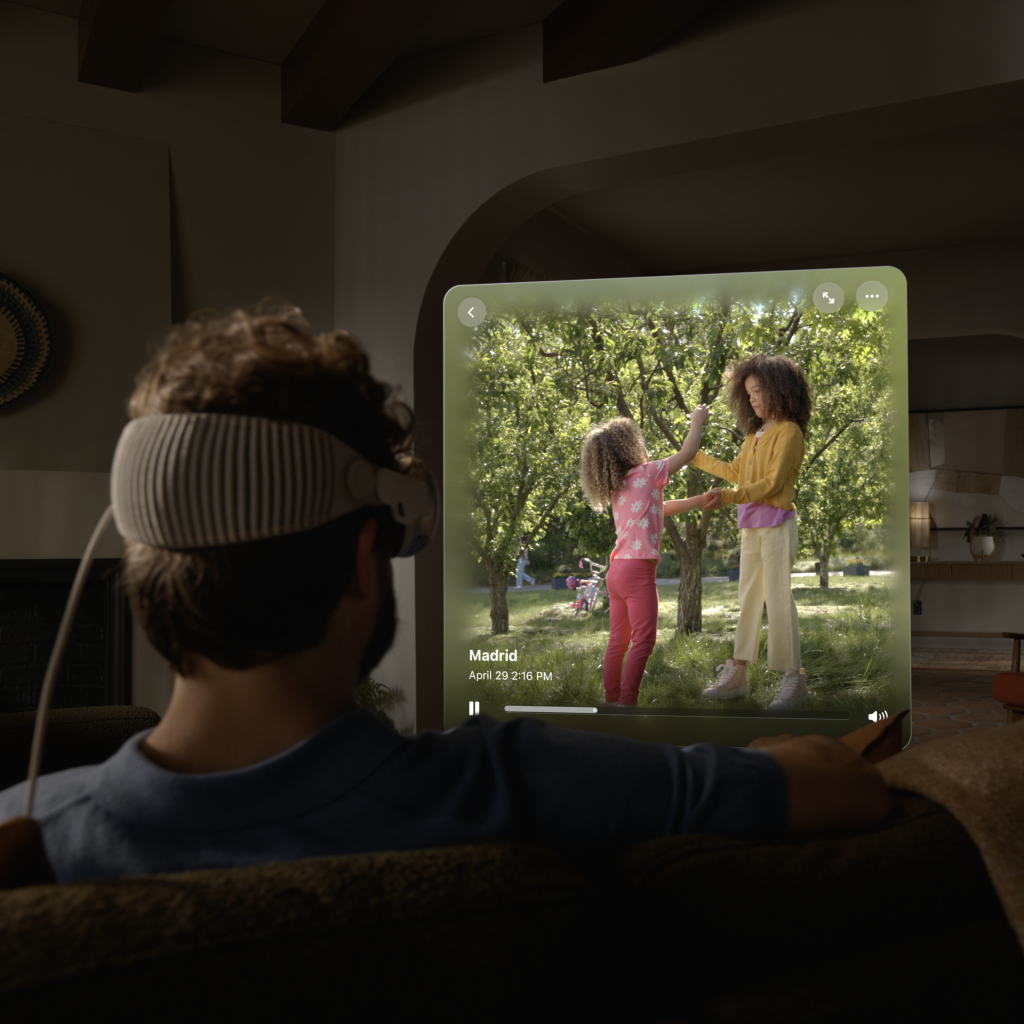In recent years, significant advancements in machine learning have led to the rise of Generative AI (GenAI). A variety of GenAI tools, such as ChatGPT, DALL-E and Gemini, have emerged as part of this technological wave. Among these tools, ChatGPT has become one of the most widely used GenAI solutions. I also found ChatGPT to be an invaluable asset in my daily workflow. Its integration into my workflow has greatly enhanced both my efficiency and productivity.
Last week, I missed an important lecture due to unforeseen circumstances. Determined to catch up, I used ChatGPT to help me understand the missed material. I uploaded the lecture slides and asked it to explain the key concepts. It broke down complex topics into simple parts and provided clear insights, helping me understand material that would have taken much longer on my own. I was genuinely impressed by how quickly and accurately it provided the information I needed.
However, when I attempted to use ChatGPT to transcribe the audio recording of the lecture, I encountered a limitation: it was unable to process voice recordings directly or generate a transcript. Instead, it suggested specialized transcription tools like Otter.ai, which helped me complete the task.

Beyond basic text generation, ChatGPT has also proven instrumental in my programming work. As a university student working with R, I often face challenges with complex code. ChatGPT helps me generate and debug code, offering useful explanations and optimized solutions. Although I still need to review and refine the code myself, it makes the process much easier and deepens my understanding of programming concepts. This has significantly improved both my learning and productivity.
Generative AI has also brought many other improvements to my daily life. It supports my learning, creativity, and problem-solving in ways that weren’t possible before. That said, AI still has its limitations. Interactions with tools like ChatGPT are mainly text-based, and they lack the personal touch that handwritten notes offer. At the same time, privacy is also a concern when sharing sensitive information with AI platforms.
In summary, my experiences align with the broader perspective that AI serves as a valuable tool to augment, rather than replace, human capabilities (De Cremer & Kasparov, 2021). As AI technology continues to advance, I believe it will become an even more supportive force in our lives.
Reference
De Cremer, D., & Kasparov, G. (2021, March 18). AI Should Augment Human Intelligence, Not Replace It. Harvard Business Review. Retrieved from https://hbr.org/2021/03/ai-should-augment-human-intelligence-not-replace-it

